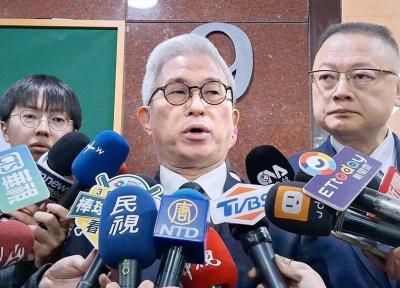Climate change will increasingly affect the world’s economy, but with advanced calculations scientists can help predict future conditions and devise strategies to circumvent drastic economic losses, the National Science Council (NSC) said at a press conference yesterday.
“One phenomenon that has been affecting Taiwan’s weather significantly in the past 20 years is the El Nino Southern Oscillation (ENSO),” said NSC-sponsored researcher and National Chung-Hsing University applied economics professor Chen Chi-chung (陳吉仲).
El Nino is defined by ocean temperatures — when the temperature of the Pacific is on average 0.4ºC higher over a six month period than previous annual averages, the year is described as an El Nino year, Chen said.
In the past, El Nino occurred every three to seven years, Chen said. Climate change means that the probability and severity of ENSO occurring, or its reverse condition the La Nina, which means the ocean average temperature over 6 months is 0.4ºC lower than the annual average, has increased.
One of the most well known ENSO events occurred in 1992 to 1993 and caused US$8 billion in global economic losses, Chen said. In 2002 a similarly severe case of the phenomenon induced a drought and US$6.6 billion losses in Australia.
“El Nino affects the global economy in that it causes heavy rain fall in some parts of the world, while inducing drought in other regions, affecting the supply and demand of water resources” Chen said.
For example, from 1997 to 1998, a serious ENSO caused the worst ever drought in southeast Asia, while the rainfall was 30 times the annual average in Peru, Chen said.
“In a Peruvian desert, the 1997 ENSO brought heavy precipitation which formed a 2,000km² lake,” he said.
Unaware of upcoming weather conditions, farmers could be planting as usual, oblivious to the fact that a flood was coming, or the integrated circuit industry could be stranded with no water with which to clean their chips, he said.
“With modern technology scientists can forecast these potential catastrophes and advise the agricultural industry on farming schedules, while rationing water resources for water-reliant industries such as chip manufacturers,” he said.
And that information is very useful, as the Hsinchu science park alone contributes 10 percent of Taiwan’s GDP, Chen said.
“For example, if an El Nino year is predicted, as a means to shift water usage priorities, the government could strategically set domestic, industrial and agricultural water prices so that water resources can be wisely distributed,” he said.
In addition to water prices, rice prices statistically increase 10 percent to 16 percent in severe ENSO years. If the condition can be accurately predicted, the government can similarly stock up on rice supplies, he said.
“Having a relatively accurate system like we do now proves to be extremely economically valuable — if water resource policies referenced a prediction and made the relevant water price changes, the government could potentially gain NT$117 million.”

Taiwan is to commence mass production of the Tien Kung (天弓, “Sky Bow”) III, IV and V missiles by the second quarter of this year if the legislature approves the government’s NT$1.25 trillion (US$39.78 billion) special defense budget, an official said yesterday. Commenting on condition of anonymity, a defense official with knowledge of the matter said that the advanced systems are expected to provide crucial capabilities against ballistic and cruise missiles for the proposed “T-Dome,” an advanced, multi-layered air defense network. The Tien Kung III is an air defense missile with a maximum interception altitude of 35km. The Tien Kung IV and V

The disruption of 941 flights in and out of Taiwan due to China’s large-scale military exercises was no accident, but rather the result of a “quasi-blockade” used to simulate creating the air and sea routes needed for an amphibious landing, a military expert said. The disruptions occurred on Tuesday and lasted about 10 hours as China conducted live-fire drills in the Taiwan Strait. The Civil Aviation Administration (CAA) said the exercises affected 857 international flights and 84 domestic flights, affecting more than 100,000 travelers. Su Tzu-yun (蘇紫雲), a research fellow at the government-sponsored Institute for National Defense and Security Research, said the air

A strong continental cold air mass is to bring pollutants to Taiwan from tomorrow, the Ministry of Environment said today, as it issued an “orange” air quality alert for most of the country. All of Taiwan except for Hualien and Taitung counties is to be under an “orange” air quality alert tomorrow, indicating air quality that is unhealthy for sensitive groups. In China, areas from Shandong to Shanghai have been enveloped in haze since Saturday, the ministry said in a news release. Yesterday, hourly concentrations of PM2.5 in these areas ranged from 65 to 160 micrograms per cubic meter (mg/m³), and pollutants were

Taiwan’s armed forces have established response protocols for a wide range of sudden contingencies, including the “Wan Chun Plan” to protect the head of state, the Ministry of Defense (MND) said today. After US President Donald Trump on Saturday launched a series of airstrikes in Venezuela and kidnapped Venezuelan President Nicolas Maduro, concerns have been raised as to whether China would launch a similar “decapitation strike” on Taiwan. The armed forces regularly coordinate with relevant agencies and practice drills to ensure preparedness for a wide range of scenarios, Vice Minister of National Defense Hsu Szu-chien (徐斯儉) told reporters before a